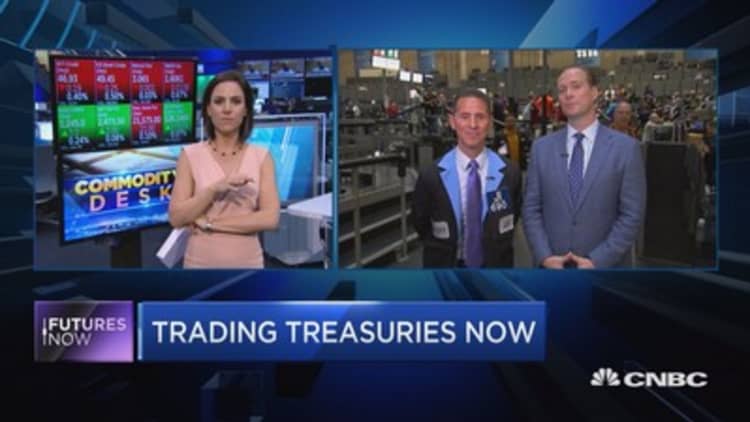
If the market needs something to worry about, the Federal Reserve this week — and indeed for the rest of the year — just might be the catalyst.
In fact, a mistake from the Fed might be the only thing investors really fear right now in this, the eighth year of the second-longest bull run ever. The worry is that the central bank might make the same mistake it did in 1994 when it tightened policy at a vulnerable time for the economy, triggering the worst year for bonds since the late 1920s and the bankruptcy of Orange County, California.
Nobody knows what this round of modest Fed aggressiveness will yield. But it comes at a time when the U.S. recovery feels fragile, inflation is nowhere to be found, and both the stock market rally and the broader economic recovery are awfully long in the tooth.
For the Fed, getting the timing right for policy normalization, after so many years of cheap money and bountiful liquidity, will be critical.
"They've left themselves with very little flexibility to respond to any negativity," said Peter Boockvar, chief market analyst at The Lindsey Group. "It's so easy to cut rates and print money. That's great, everyone has a party during that. Trying to determine when to take that away is always the most difficult part."
Investors are worried the Fed could get that part wrong.
In a recent Bank of America Merrill Lynch fund manager survey, investing pros listed a Fed mistake as their second-biggest fear — right after a bond market meltdown, two events that likely would be intertwined.
Corporations, governments and individuals have feasted on debt since the Fed took its benchmark rate to near zero in late 2008 as the financial crisis raged. Total nonfinancial debt has jumped from $35.1 trillion in 2008 to a record $47.5 trillion as of the first quarter, an increase of nearly 35 percent, according to Fed data.
"There's no free lunch to have rates at zero for as long as they did and quintupling of their balance sheet," Boockvar said. "Reversing that is not without a mess."
The 1994 lesson is fraught with peril — hedge fund collapses, corporate debt scandals and a lasting warning sign about raising rates at the wrong time. Boockvar believes the Fed waited too long to hike in this cycle and now faces danger.
Fed rhetoric, though, has shifted to more dovish tones lately. Chair Janet Yellen during recent congressional testimony said the Fed may not have much further to go until it reaches the level where its policy is neither accommodative nor restrictive. That would coincide with a "real" funds rate, or the actual level compared with inflation, around zero.
"They need to avoid shocking markets, catching markets off guard. They're always worried about an accident in the market that then causes collateral damage," said Quincy Krosby, chief market strategist at Prudential Financial "There's a difference between an accident and a mistake. A mistake is something more systemic."
"If you remember 1994, when rates rise something always breaks," she added.
Of course, the Fed's calculus doesn't just involve rates. There's also the matter of what to do with the $4.5 trillion the Fed finds on its balance sheet in the form of bonds it purchased to help stimulate the economy out of its crisis doldrums. All but about $800 billion of that came in three rounds of purchases known as quantitative easing.
That's another reason why Krosby expects Yellen and her fellow officials on the Federal Open Market Committee to be cautious about tightening. Prior to Yellen's congressional appearance, markets were worried the Fed had changed from data dependence to a preset course.
"The Fed works with Wall Street, and certainly on a major undertaking like this, they're not going to do this in a vacuum," Krosby said.
The FOMC has a two-day meeting this week starting Tuesday. No one thinks the Fed will raise rates at the meeting, but there is speculation that it could signal the beginning of the balance sheet unwinding for September. The committee will allow designated caps of the proceeds it gets from maturing bonds to roll off and will continue to reinvest the rest.
Krishna Guha, an economist at Evercore ISI, said the FOMC will "avoid making any big calls on rates for several meetings" particularly as long as inflation stays low.
Traders are currently pricing in a 48 percent chance that the Fed hikes again before the end of the year, according to the CME.
WATCH: Why one trader's buying bonds after ECB meeting



